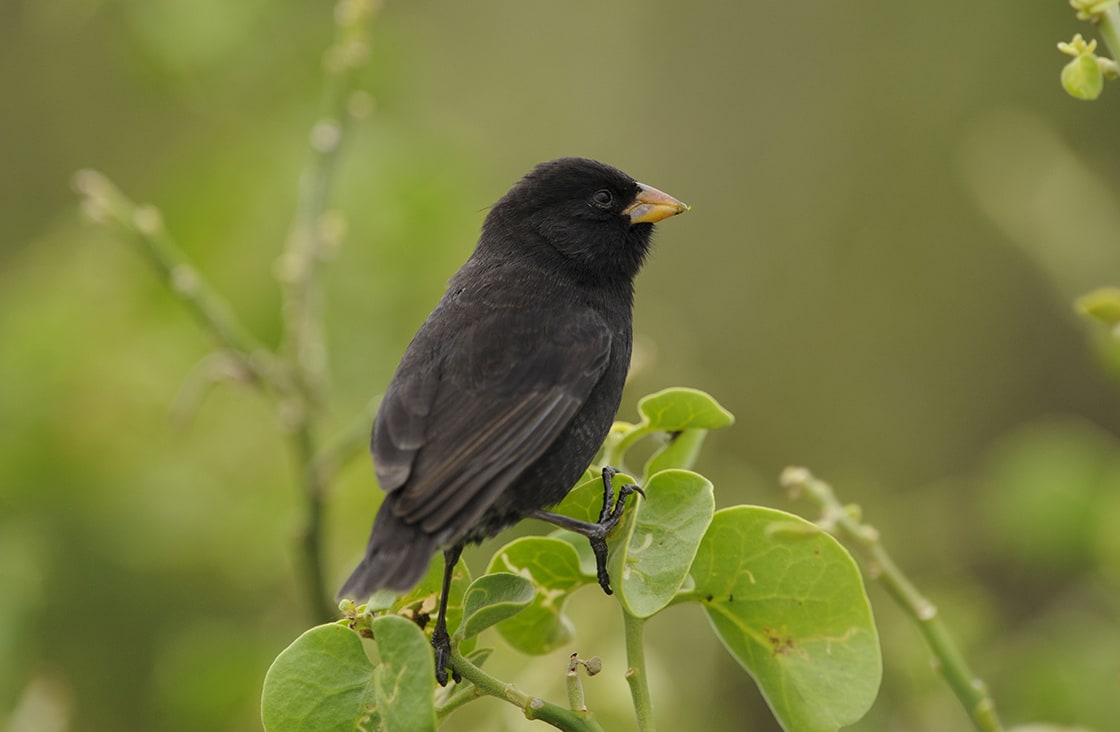
Darwin Finches are a fascinating group of bird species that are endemic to the Galapagos Islands. As their name suggests, they are also closely intertwined with Charles Darwin, the renowned English naturalist who observed and collected these small birds during his famous visit to the islands in 1835. The finches later went on to play an instrumental role in the development of his theory of natural selection and are now considered one of the clearest examples of adaptive radiation in the world. As a result, the finches are among the most famous and best-loved species of the Galapagos. Read on to learn more about these intriguing birds.
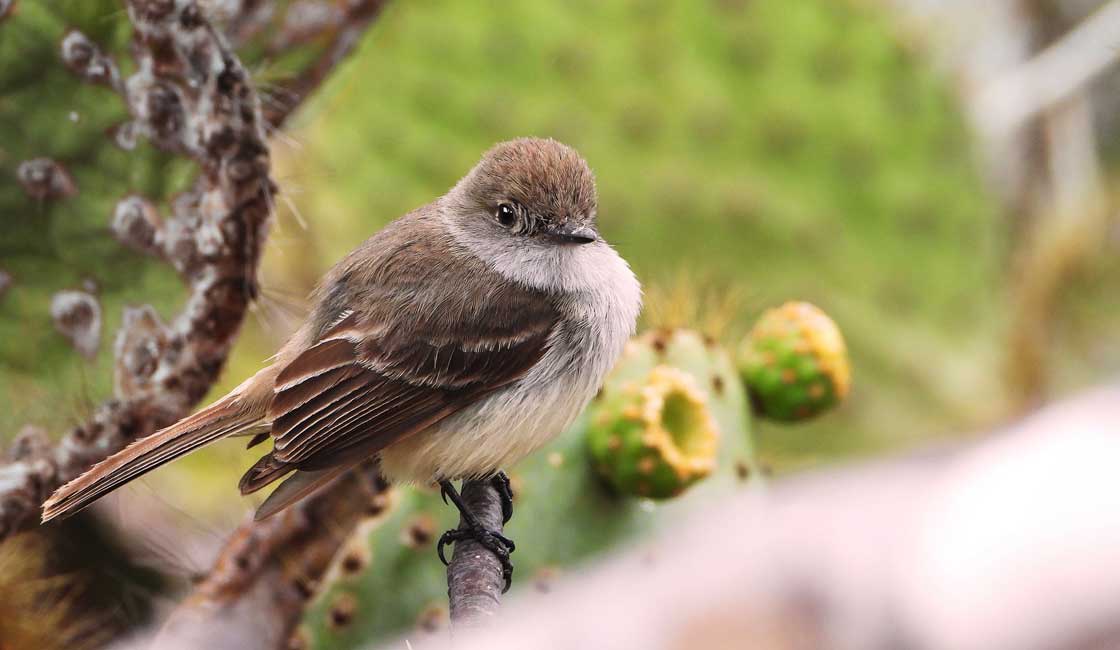
A look
Darwin Finches, or Galapagos Finches, are small land birds, varying in size from 10 to 20 centimeters and weighing between 10 and 38 grams. They all display a similar body type and coloration, which makes them virtually impossible to distinguish according to size or plumage. The finches are generally black, brown or olive in color, which led to Darwin to refer to them as “drab and dull little birds” when he first encountered them.
Their most striking feature is the beak which varies markedly in shape, size and color. As you’ll see, the beak played a crucial role in distinguishing the various species and in inspiring Darwin’s theory of evolution via natural selection.
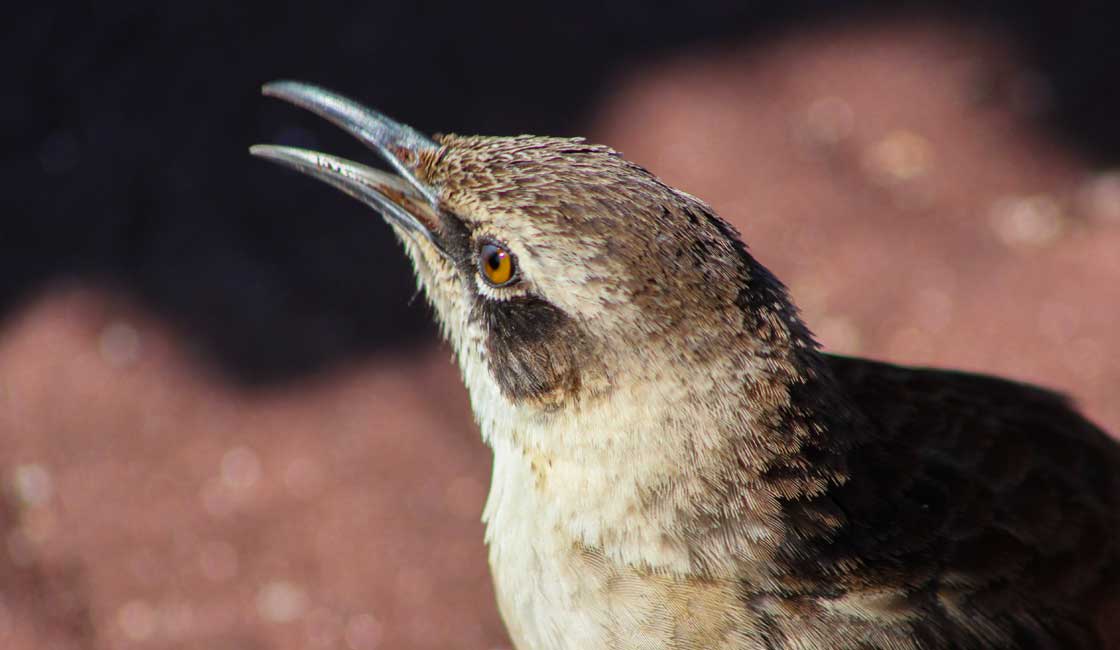
Darwin’s Finch up close
Darwin Finches are virtually unique to the Galapagos, with only one species being found anywhere else in the world – on Cocos Island in Costa Rica. They all involved from a single common ancestral population that colonized the islands from the South American mainland some 2 to 3 million years ago.
There are 14 species of Galapagos finches, with 13 still residing on the islands today (the Large Ground Finch, unfortunately, became extinct). Each species adapted to fill a specific niche in their new habitat, evolving into distinct populations across several of the islands – a trend that can be seen with numerous Galapagos wildlife.
The finches belong to the tanager family, are not true finches and do not actually belong to any recognized bird family, making them entirely unique. Scientists have categorized them into four broad types, including Warbler finches, Vegetarian finches, Tree finches and Cactus or Ground finches.
They are also notoriously hard to categorize and identify. This is because the beaks can be variable and start to overlap into the range of another species. There is a famous saying, coined by bird guidebook author Michael Harris:
“It is only a very wise man or a fool who thinks that he is able to identify all the finches which he sees”.
They certainly baffled Darwin when he first encountered them and it took subsequent work by experts in ornithology to shed light on the distinctions between the various populations. However, if you know which finches are endemic to which island, you have a good chance of being able to narrow down the options. For example, on Floreana island, any finch you see is likely to be a medium tree finch, whilst the large cactus ground finch can only be found on Española, Genovesa, Darwin and Wolf Islands.
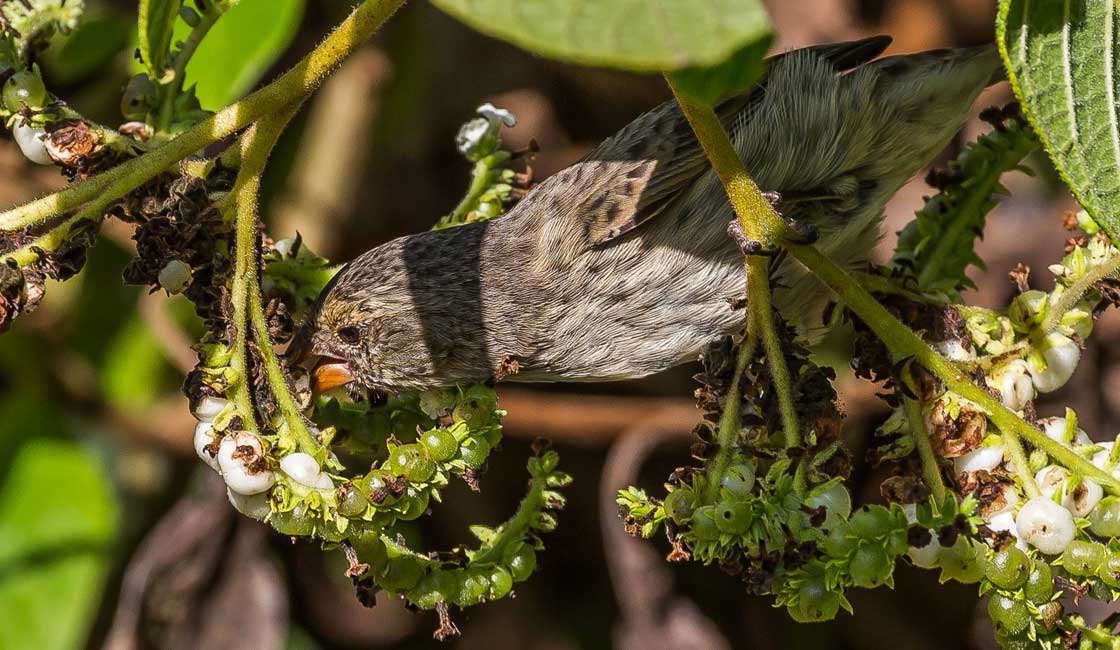
Fruit picking
The finches feed on a variety of different food sources, depending on their island habitat. Their sharp beaks are highly adapted, whether for crushing seeds, pecking wood or probing flowers for nectar. Each population has evolved specialized feeding capabilities, some of which are quite unusual.
The most obvious distinction between finch species is between those with long, pointed beaks and those with shorter, stouter beaks. The former tend to be insect or nectar-feeding birds who benefit from a slim beak they can poke into holes to obtain food. Meanwhile, in the latter type, the beak resembles more of a claw shape and is ideal for grinding and crushing seeds.
The woodpecker and mangrove finches are classic examples of the first type. They use their slender beaks to hold twigs and cactus spines which they then skilfully employ to fish out larvae from inside tree cavities. In contrast, ground finches have large powerful beaks that look disproportionate to the rest of their body, but which are perfectly suited to crushing hard seeds on the ground. Ground finches also eat ticks which they remove from the skin of tortoises and iguanas. One sub-species, nicknamed the vampire finch, has even been observed feeding on the blood of these reptiles.
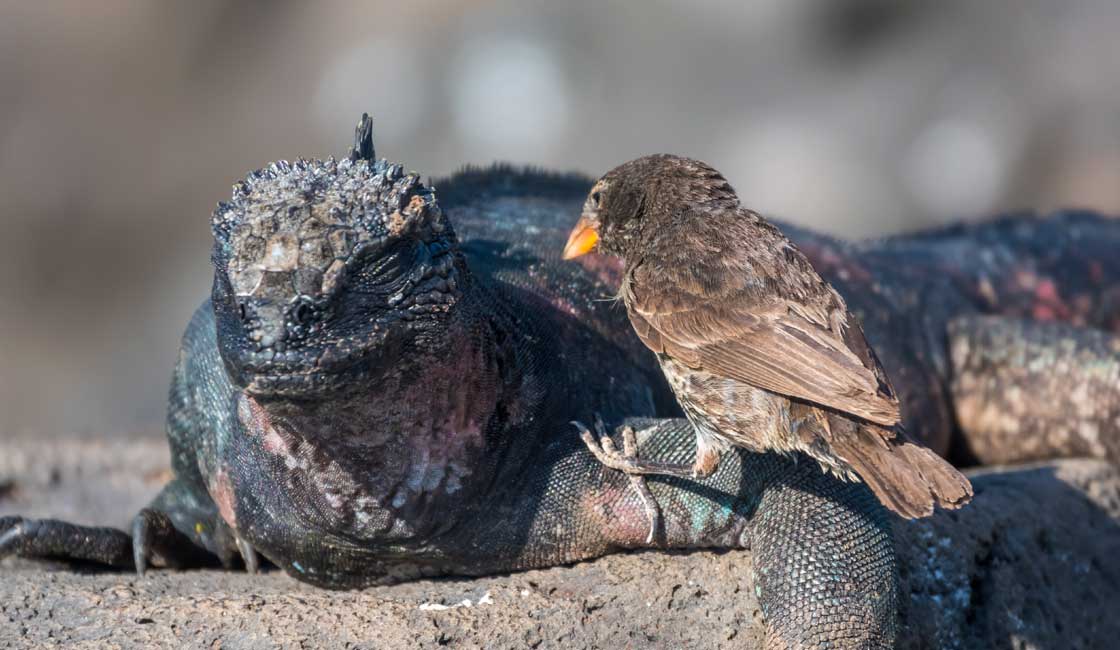
With an Iguana
The 13 species of finches we see today are all endemic to the islands and played a pivotal role in providing early evidence for natural selection. Each finch population displays marked differences in beak structure which reflects how they evolved to fill different environmental niches. As populations remained isolated and confined to their respective islands, they evolved markedly different characteristics as they adapted to local conditions and food sources.
Darwin himself, not being an expert on birds, was actually ill-suited to analyzing the evidence the finches provided and focused his attention instead on collecting details on tortoises and other species. He collected several finches but failed to take note which islands each particular bird came from. It wasn’t until he passed the evidence to experts back in London that it became clear the finches were all part of one unique set of species, different to any other bird in existence and that, furthermore, despite being clearly related, they all seemed to display marked differences from each other.
Darwin took these findings on board, considering them in light of his developing idea that species are not fixed and unchanging, but adapt to their specific environment. He then used the evidence from the finches to make some of his earliest comments about the theory of evolution (or “descent with modification” as he called it), stating in his memoir The Voyage of the Beagle:
“Seeing this gradation and diversity of structure in one small, intimately related group of birds, one might really fancy that from an original paucity of birds in this archipelago, one species had been taken and modified for different ends”.
This provided clear evidence for his famous theory that natural selection leads to the creation of new biological species as animals compete and subsequently evolve in certain adaptive directions over generations.
The finches found on the Galapagos continue to be the subjects of intense research up to the present day. In fact, they are considered to be the world’s fastest-evolving vertebrates because of the way their physical characteristics and feeding behaviors adapt so closely and rapidly with the unique Galapagos environment.
Over the past few decades, evolutionary biologists Rosemary and Peter Grant have been tracking changes in the finch populations, noting their fast adaptations in response to changing climatic conditions and food supply. Scientists also recently confirmed Darwin’s theory that all the finch species evolved from one common ancestor through modern methods of DNA analysis. Research studies on the finches are still underway in the Galapagos, with most focusing on how some species are better equipped to deal with the rapidly changing environment than others – just as Darwin would have predicted.
If you fancy witnessing these unique bird species for yourself, along with plenty more iconic species, why not take a Galapagos Cruise. You can contact us for more information or call 1-888-215-3555.
While Rainforest Cruises aim to provide accurate and up-to-date information, we make no representations as to the accuracy or completeness of any information herein or found by following any link on this site. Rainforest Cruises cannot and will not accept responsibility for any omissions or inaccuracies, or for any consequences arising therefrom, including any losses, injuries, or damages resulting from the display or use of this information.




